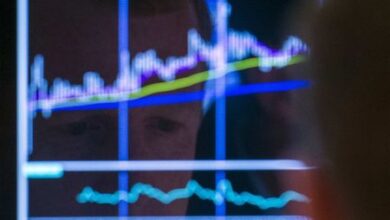US Dollar trades in the red as US traders return from Monday’s holiday

- The DXY index shows weakness as the US returns from holiday, trading modestly lower.
- No relevant reports were released during the session, while markets await fresh catalysts.
- All eyes are now on FOMC minutes from January’s Federal Reserve meeting on Wednesday.
The US Dollar (USD), as measured by the DXY index, is trading modestly lower at 104.05 with no relevant highlights seen during the European and American sessions.
Despite a post-holiday dip, the US Dollar’s stance remains firm amidst a resilient US economy and a seemingly unshakeable Federal Reserve (Fed), whose reluctance to resort to monetary easing may eventually limit the Greenback’s losses.
Daily digest market movers: The US Dollar trades mildly lower ahead of FOMC minutes
- Markets await fresh drivers to continue timing the start of the Fed’s easing cycle. FOMC’s January Meeting Minutes are due on Wednesday.
- Market anticipation is also brewing for upcoming speeches from Federal Reserve members Bowman (Wednesday) and Kashkari (Thursday) to gather additional insights.
- According to the CME FedWatch Tool, the odds of a Fed cut have significantly declined for the March and May meeting as markets push the projected start of easing to June.
Technical analysis: DXY gives up 100-day SMA, more downside may be on the horizon
The daily chart indicators reflect the somewhat conflicted picture of the current technical landscape. Despite the Relative Strength Index (RSI) sitting in positive territory, its negative slope signals a weakening of bullish momentum, hinting at potential downside risks. Simultaneously, the green bars in the Moving Average Convergence Divergence (MACD) histogram are decreasing, indicating a slowdown in buying pressure and a potential shift in sentiment.
Furthermore, although the pair is trading above the 20 and 200-day Simple Moving Averages (SMAs), which suggests a traditionally bullish stance, the struggle of the bulls to effectively consolidate above the 100-day average puts the strength of the uptrend in doubt.
US Dollar FAQs
What is the US Dollar?
The US Dollar (USD) is the official currency of the United States of America, and the ‘de facto’ currency of a significant number of other countries where it is found in circulation alongside local notes. It is the most heavily traded currency in the world, accounting for over 88% of all global foreign exchange turnover, or an average of $6.6 trillion in transactions per day, according to data from 2022.
Following the second world war, the USD took over from the British Pound as the world’s reserve currency. For most of its history, the US Dollar was backed by Gold, until the Bretton Woods Agreement in 1971 when the Gold Standard went away.
How do the decisions of the Federal Reserve impact the US Dollar?
The most important single factor impacting on the value of the US Dollar is monetary policy, which is shaped by the Federal Reserve (Fed). The Fed has two mandates: to achieve price stability (control inflation) and foster full employment. Its primary tool to achieve these two goals is by adjusting interest rates.
When prices are rising too quickly and inflation is above the Fed’s 2% target, the Fed will raise rates, which helps the USD value. When inflation falls below 2% or the Unemployment Rate is too high, the Fed may lower interest rates, which weighs on the Greenback.
What is Quantitative Easing and how does it influence the US Dollar?
In extreme situations, the Federal Reserve can also print more Dollars and enact quantitative easing (QE). QE is the process by which the Fed substantially increases the flow of credit in a stuck financial system.
It is a non-standard policy measure used when credit has dried up because banks will not lend to each other (out of the fear of counterparty default). It is a last resort when simply lowering interest rates is unlikely to achieve the necessary result. It was the Fed’s weapon of choice to combat the credit crunch that occurred during the Great Financial Crisis in 2008. It involves the Fed printing more Dollars and using them to buy US government bonds predominantly from financial institutions. QE usually leads to a weaker US Dollar.
What is Quantitative Tightening and how does it influence the US Dollar?
Quantitative tightening (QT) is the reverse process whereby the Federal Reserve stops buying bonds from financial institutions and does not reinvest the principal from the bonds it holds maturing in new purchases. It is usually positive for the US Dollar.
Information on these pages contains forward-looking statements that involve risks and uncertainties. Markets and instruments profiled on this page are for informational purposes only and should not in any way come across as a recommendation to buy or sell in these assets. You should do your own thorough research before making any investment decisions. FXStreet does not in any way guarantee that this information is free from mistakes, errors, or material misstatements. It also does not guarantee that this information is of a timely nature. Investing in Open Markets involves a great deal of risk, including the loss of all or a portion of your investment, as well as emotional distress. All risks, losses and costs associated with investing, including total loss of principal, are your responsibility. The views and opinions expressed in this article are those of the authors and do not necessarily reflect the official policy or position of FXStreet nor its advertisers. The author will not be held responsible for information that is found at the end of links posted on this page.
If not otherwise explicitly mentioned in the body of the article, at the time of writing, the author has no position in any stock mentioned in this article and no business relationship with any company mentioned. The author has not received compensation for writing this article, other than from FXStreet.
FXStreet and the author do not provide personalized recommendations. The author makes no representations as to the accuracy, completeness, or suitability of this information. FXStreet and the author will not be liable for any errors, omissions or any losses, injuries or damages arising from this information and its display or use. Errors and omissions excepted.
The author and FXStreet are not registered investment advisors and nothing in this article is intended to be investment advice.



